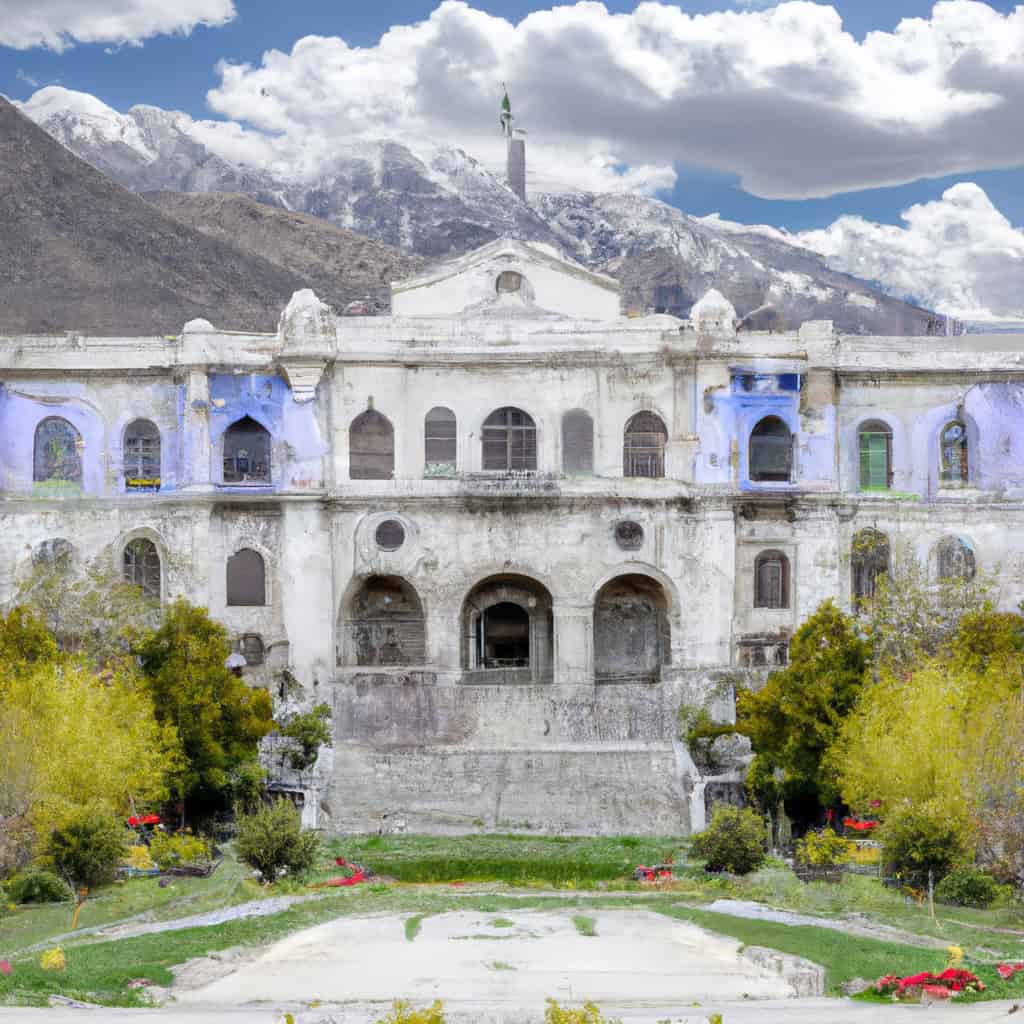Darul Aman Palace in Kabul, is one of many fascinating sites that both foreign visitors and local tourists can explore while they visit Afghanistan and exploring Kabul Province. The palace serves as a stunning embodiment of Afghanistan’s rich past, revealing tales of history, power, conflict, and resilience that are woven into its very walls. Its presence is a testament to the resilience of a nation and its people, standing tall amid a landscape that has seen centuries of change.
Darul Aman Palace Most Important Events
- The Construction of Darul Aman Palace: The palace’s birth itself marks a memorable moment in history. Built in the 1920s, during King Amanullah Khan’s reign, it was a symbol of his dream for a modern, independent Afghanistan.
- Damage And Destruction: Regrettably, the palace was significantly damaged during the Afghan Civil War in the early 1990s. It’s said that the building was used as a strategic point during the war, leading to its partial destruction.
- Restoration of the Palace: In 2016, the Afghan government undertook an extensive restoration project. The reestablishment of Darul Aman Palace became a beacon of hope for the Afghan people, symbolizing the country’s ability to rebuild and start anew.
History of Darul Aman Palace in Kabul
Constructed under King Amanullah Khan’s reign in 1920 as a part of his modernization effort for Afghanistan, the Darul Aman Palace instrumented a new era. The palace originally housed the Afghanistan parliament, embodying the king’s aspiration to establish a constitutional monarchy.
Unfortunately, in a twist of fate, the palace stood empty and was repurposed as a small medical school by 1978. With Soviet influence prominent during the period, the palace was re-engineered to house defense institutions, bearing the brunt of the Soviet-Afghan War that raged from 1979 to 1989.
The 1990s brought along the civil war that led to further damage of this once-glorious palace. After seeing numerous tragedies, this historical monument was finally due for restoration in 2016. Today, it stands as a testament to resilience and bravery, prompting feelings of awe in the hearts of locals and tourists alike.
Why It’s Important to Afghan History
Darul Aman Palace played a vital role in Afghan history, primarily symbolizing the modernization drive planned by King Amanullah Khan. The king’s dream was to set up the country as a modern, independent nation with the Palace representing his aspirations.
Furthermore, the palace witnessed crucial historical events, such as wars, throughout the 20th and 21st century. Each scar on its façade narrates a unique story of struggle, survival and rebirth, making it an invaluable monument in the historical narrative of Afghanistan.
Why to Visit Darul Aman Palace
The Palace is not just a historical site, it also exemplifies architectural grandeur. The neoclassical styled palace, with its beautiful dome and majestic columns, is an example of magnificent German engineering. Its design blends Islamic and European architectural elements, showcasing artistic transcendence over the decades.
Surrounded by scenic beauty with snow-capped mountains forming the backdrop, the palace offers an enchanting experience. Take a tranquil stroll through the lush gardens surrounding the palace, with its elegant buxus hedges, and find yourself immersed in a world of peace and serenity.
- Enjoy breathtaking panoramic views from the Palace.
- Witness a mesmerizing sunset behind the silhouette of the Palace.
- Explore the intricately designed interiors and well-preserved historic artefacts.
- Capture the grandeur of this majestic palace for your photo collection.
- Learn about the Afghan history.
The Palace is located on the Western outskirts of Kabul and is accessible by road. The best time to visit Darul Aman Palace is from March to October, where you can enjoy the pleasant weather.
Cultural & Tourist Significance
Darul Aman Palace holds immense cultural significance. It serves as a visual representation of Afghanistan’s rich cultural history, drawing visitors from all over the world to bear witness to its historical tales.
Moreover, with renovation, the palace has emerged as a major tourist attraction in Kabul, significantly boosting the city’s tourism. It stands as a testament to Afghanistan’s tumultuous past, while also symbolizing the country’s potential for a hopeful future.
The palace has also been a key inspiration for cultural and artistic expression in Afghanistan. From popular literature to visual arts, the palace has been mentioned, depicted and celebrated, becoming an invaluable part of the Afghan cultural psyche.
Interesting Facts
An interesting fact about Darul Aman Palace is that despite its large size, it was never permanently occupied. The only time it was fully occupied was during the short-lived period when it housed the Medical Institute of Kabul.
In the past, Darul Aman Palace also served as a frontline to the Mujahideen during the Afghan civil war. Its position high up in the mountains made it a strategic point for the fighters.
Another intriguing piece of information is that the Darul Aman Palace restoration used all Afghan resources and personnel, demonstrating the country’s capability and resilience.
The story of Darul Aman Palace is a microcosm of Afghan history. From its hopeful start as Amanullah Khan’s dream, through the realities of war and decay, to its phoenix-like rise, the Palace reflects the enduring spirit of the Afghan people. It is indeed a must-visit destination for tourists in Afghanistan, bringing a deeper understanding of the country’s past and hopes for its future.


